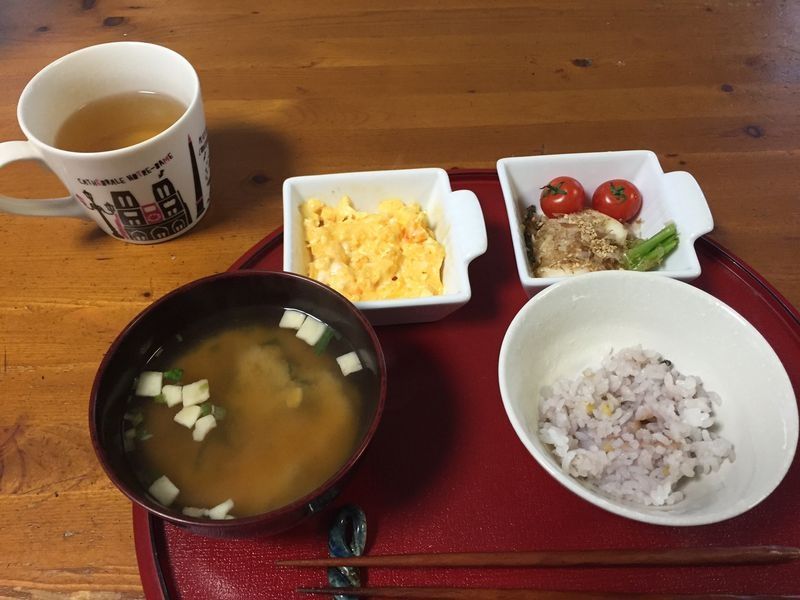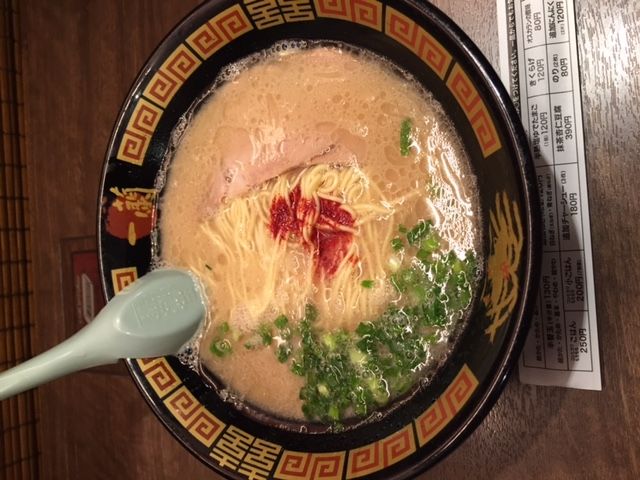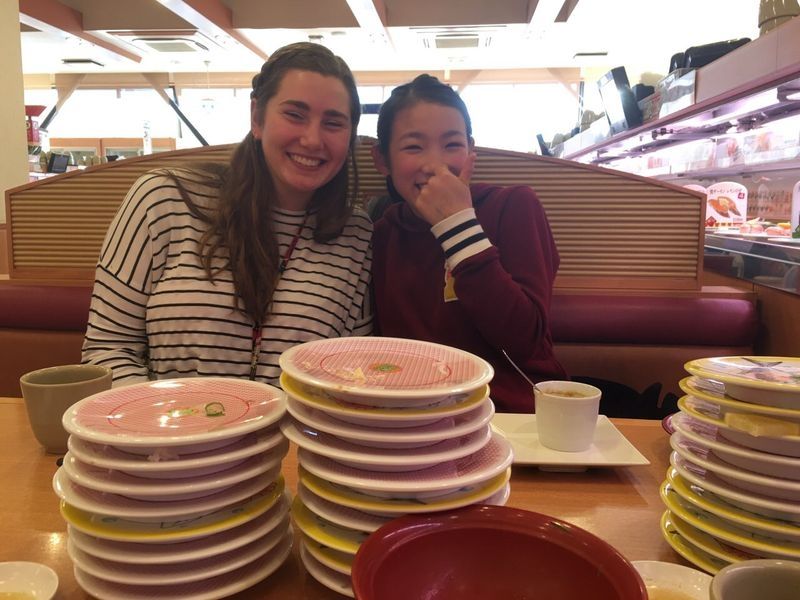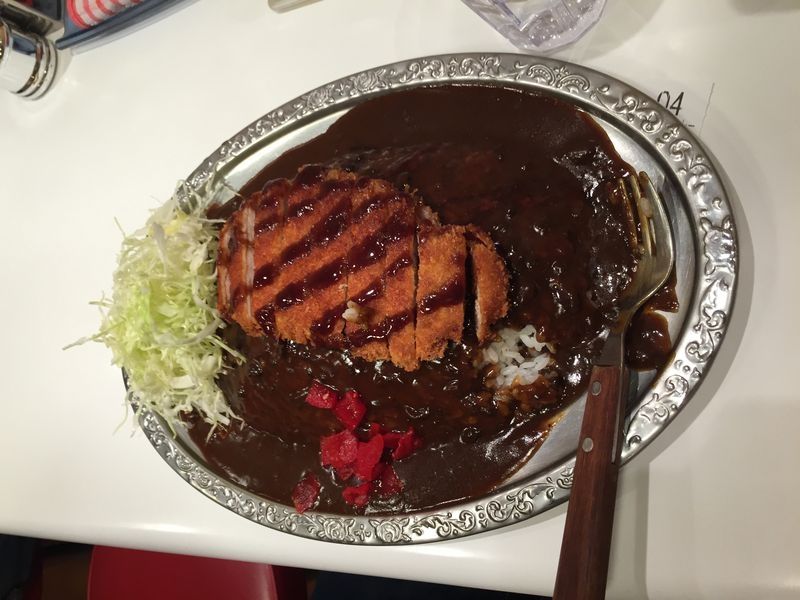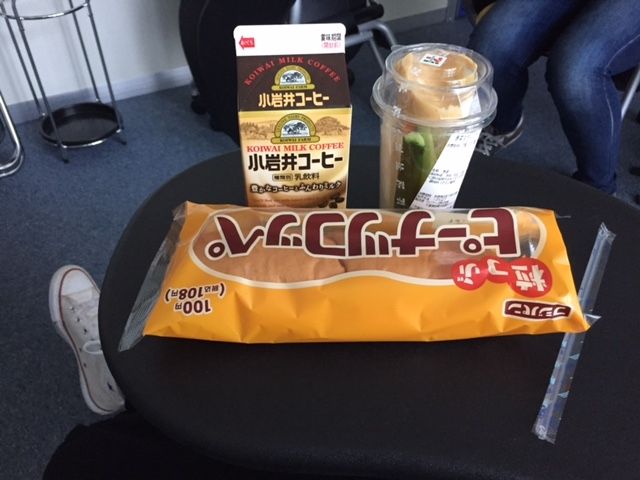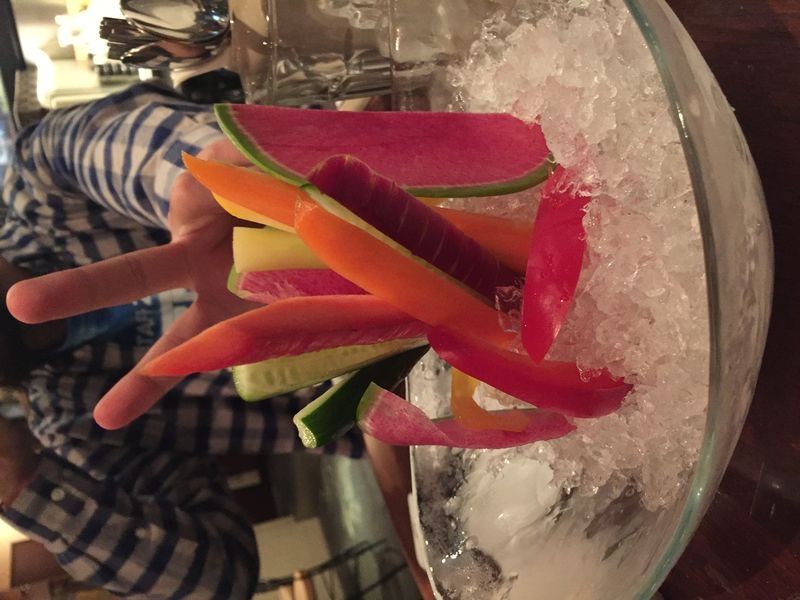FOOD ft. Story Time: Restaurant Edition
"I hope you like seafood!"
"You're going to eat nothing but fish and rice for three months!"
"Aren't you going to miss normal food?"
It seems like much of the concern I received from friends and family when they learned of my plan to live and study in Japan for three months centered around my food options. I suppose the concern is somewhat reasonable considering that up until a few years ago I pretty much only ever ate three things when we went out to eat: caesar salad, sirloin steak, or chicken Alfredo. Only recently have I discovered that I quite enjoy the mouth-tingling sensation of spicy food, that vegetables are not actually the downfall of modern society, and that tomatoes are not necessarily satan's curse on humanity. Regardless, though, of my newly born openness to different foods, my family and friends seemed concerned that the only things I would be eating in Japan for the extent of my time were raw fish, rice, and ramen. Unfortunately (or maybe, rest assured?), this is a misled and slightly stereotypical train of thought.
Allow me to explain.
Tourism is a large industry in Japan, and especially in recent years, the industry has been rapidly increasing. Thus, despite its sea-bound geographical location, Japan has a rather large variety of food options. Of course, rice and fish are traditional staples in a Japanese diet so I'm not denying the high probability of eating a variety of dishes containing these foods and eating them often, but there are plenty of other options available, too!
I usually eat breakfast and dinner at my homestay everyday, except for the special days when I eat out with friends. A typical breakfast for me here consists of granola, yogurt, and honey, or milk and cereal. Not that different from what I eat in the states. True, the cereal is not the normal brands I am used to that contain tons of sugar and are mostly wheat-based, but I think that makes it all the better. Recently, for dinner we have been eating different types of nabe1 a lot, which is amazing in the cold weather. However, typically, dinner includes salad, rice, some type of meat, fish or tofu, and a lot of vegetables.
Simple, but delicious! I love the food at my house.
Then again, a few nights ago, we had beef prepared in a cream, wine, and mushroom sauce. Regardless, of what we have though, it is always delicious. I am extremely lucky to have found myself in a home with very good cooks.
You might now be thinking, "That certainly sounds like a fish and rice based diet... what was your point again?" Fair enough. Home cooking is typically Japanese food; after all, this is Japan. Beef is a lot less likely to show up on your plate everyday because it is more expensive, but the variety outside the home is a whole different story.
Of course, there are ramen, soba, and udon shops galore, and plenty of places to go to find amazing sushi.
RAMEEEEEEEN. Way better than the cup noodle, or boxed kind you can find in the states. I paid for a half size of extra noodles when I went.
My little sister and I after eating 28 plates of sushi with the help of お父さん (Dad, i.e. my host dad). Each plate only had two pieces of sushi on it, though, unlike the sushi rolls in America.
Additionally, though, curry rice is a hugely popular Japanese dish (one of my new favorites), even though I had always previously related curry with Indian food.
Really good curry rice with chicken cutlet, from a restaurant with a gorilla logo near Akihabara station, Electric town exit.
Chinese food, Indian food, and Korean food places can be found quite easily. As well as plenty of burger joints, including McDonalds, or マック (Makku), as it is often called here. Personally, I have also been to an Italian restaurant and Taco Bell (where they happened to offered a Japanese special of shrimp tacos). Also, I have seen way more Denny's here than I have ever seen in my life, let alone in America. There are so many meat restaurants, where you can go to just straight up order plates of beef and cook it yourself, whether on a grill in front of you in the table or by dunking it in boiling water (shabu-shabu).
Let us not forget one of my favorite things about Japan so far... the large abundance of delicious パン屋 ( pan-ya2 )! Freshly baked breads, rolls, cakes, and sweet treats. The bakeries here are the best I have ever experienced (though I am only really able to compare them to the ones in the states), and they're probably what I'll miss most of all. Honestly, they will probably always be one of first things I think back on while remembering food in Japan. Though that could just be me since I really love my freshly baked sweet breads, and cream puffs.
Completely unrelated to what I'm currently talking about. But this was konbini (convenience store) lunch one day: milk coffee (my fav), peanut butter bread, and veggie sticks with ginger dressing. Yuuuum <& cheap ;)>
Anyways! There is a ton of places to get a variety of foods. I have a friend on this trip, who came as an all year student, and she is allergic to seafood. Everyone is shocked when she tells them, and people always wonder why she chose to come to Japan. But she has been here for probably around four months now, and she is getting along just find. So, worry not. I am pretty sure I have eaten a larger variety of food here in the last three weeks than in any similar three weeks spent in America.
Badabadabaaaaa!
It's Story Time~~
The name of today's story is At the Italian Restaurant. But first, a bit of background.
If you come to Japan without any understanding of Japanese syllabary, hiragana and katakana, you are probably going to find yourself struggling. I knew both the hiragana and katakana syllabary charts before coming here, and it has still been pretty difficult for me, especially in restaurants. A majority of foreign words that are adapted to Japanese are written in katakana, so when you go into foreign restaurants or cafes, majority of the time the menu will be written in katakana. It is always interesting ordering food at a new restaurant. For the most part, my strategy has been to look at the pictures and when the waiter/ waitress takes my order I point at it and say, "Korewa, onegaishimasu." (This, please.) If that fails, because of lack of pictures or lack of interest in the foods pictured, my friends and I always have a good time sounding out the katakana. Then, from that, I will either hesitantly mumble the katakana, while pointing at the word, and attach an onegaishimasu to the end for good measure. Usually, it is pretty easy to figure out what katakana words mean because, if they are taken from English, they just sound like English words with a Japanese speech pattern. For example, アイスクリーム (pronounced ai-su-ku-ri-mu) is ice cream. It is easy to guess the English word by reading and pronouncing the katakana.
That said.
My friends and I decided one night that we wanted to go out to see a light show in Shiodome. Shiodome is a fancier, more business-y part of the Tokyo Metropolitan Area. There are a lot of TV stations and beautifully constructed buildings, and a lot less hustle and bustle of convenience stores, super markets, restaurants, and goods shops everywhere you look like the area that surrounds my school and where I spend a lot of time. However, one of my friends had done some google-mapping (yes, I used that as a verb), and found that there was an Italian town, with a bunch of Italian restaurants not too far from the station. We agreed that sounded good, and off we went. This was actually my first experience eating in a restaurant in Japan. When we got there, at around 5:30 or 6 o'clock, there weren't any other customers. This didn't come as a surprise to any my friends (all of whom are year long students) because, they told me, as far as they had observed dinner time seemed to typically fall between 7 and 8. Basically, we were early.
Anyways, the headings of the different menu sections (Salad, Pasta, Fish, etc.) were written in Italian, but the menu items themselves were written in a mix of katakana with the occasional kanjis just to make life that much more difficult. I was feeling a salad that night, mostly because they were cheap and had the least intimidating names on the menu. So, I went with the top choice, which after sounding out the katakana was something like su-te-ku sa-ra-da, i.e. steak salad. Or so I thought.
This is what I got.
A giant bowl of ice with sticks of vegetables. It was very pretty, and also completely unexpected.
Unfortunately, I had made a mistake reading the katakana. It was actually something like this: スティークサラダ, or su-ti-ku sa-ra-da. Stick salad. Wow.
We all had a good laugh, though, and the veggies were fresh, chilled, and delicious. So I would say it was a great experience.
That's all I have for you today! Catch you on the other side of the Land of the Rising Sun!
xxx
イヴァ (Eva)
Footnotes:
1. Nabe technically means pot, but in this sense it often refers to a dish also known as hot pot. All the ingredients and thrown into a pot with broth, and the pot is put over a fire. Then, when it is time to eat, the pot is placed in the center of the table and everyone takes what they want from the pot and puts it in the own small bowl to eat. It is a enjoyable communal dish and especially nice in the winter for fighting off the chilly temperatures.
2. Pan-ya literally translates to 'bread shop,' i.e. bakery. If you ever come to Japan, you have to stop by one of the bakeries! Try to find a small local one rather than a big chain one if you can! It makes the experience that much more memorable.
~~~~
Hajimemashite! (Nice to meet you!) My name is Eva Horstman, and I have been in Japan for about three weeks now. Doozo Yoroshikuonegaishimasu. (Please take care of me from now on.) Sorry, that this post is so long, and doesn't really have any introduction. I was having a little trouble deciding what to write about. Food, though, is something, I love in general, and all the food I have had here so far has been so delicious that I just decided to jump right in. Also, after being in Japan for this long already it seemed silly to retrace all the way to the beginning and just summarize my time so far. However! I would be more than happy to do that if anyone expresses their interest in hearing about it! Let me know what you think about my blog in the comments, and if you have any questions about my time here, send them my way!
Related Posts

greatest hits (self roast post)
Well, my time here in Japan is coming to a close and I’m honestly really upset about it. I mean, it hasn’t actually hit me that I’m leaving, but the... keep reading
it's a choice
The choice to take a gap year is, obviously, different for everybody. It takes a lot of consideration and several variables to even begin considering if taking a year between... keep reading
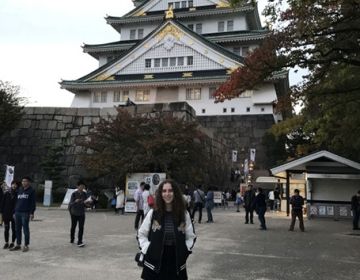
trips
Hi everyone, it’s been some time since my last blog entry. I know the end of the month is quickly approaching and you all were waiting for me to post... keep reading

